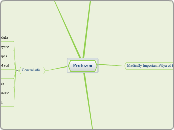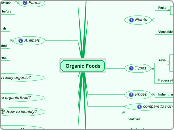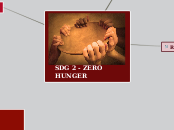Protozoa
Nutrition
amoebas phagocytize and digestion is in vacoules--waste out thru anal pore or PM
ciliates wave food to special opening called cytosome
pellicle--special covering
need lots of water
in intestines anaerobic growth
mostly aerobic heterotrophs
Medically Important Phlya of Protozoa
Euglenozoa
hemoflagellates
T. cruzi: Chagas' Disease--"kissing bug" b/c is bites on face
T. brucei gambiense: tsetse fly transmission
Trypansoma: African Sleeping sickness
long slender bodies with undulating membrane
blood parasites
Euglenoids
can photosynthesize
some are facultative chemoheterotrophs
red eye spot to sense light
move by flagellum at anterior end
pellicle
photoautotrophs
Ciliophora
Alveolata
not sure why this info goes here...
same rRna sequences
they all have membrane-bound cavities under the cell surface
ciliates, apicomplexans, and dinoflagellates may be placed here
Balantidium
cysts are ingested by host and enter large intestine
causes severe dysentry
human parasite (only ciliated one)
ciliates--cilia arranged in precise rows
Apicomplexa
Chryptosporidium
respiratory and gall bladder infections
human parasite
Tocoplasma gondii
congenital defects in uetero
trophozoites--called tachyzoites repro sexually and asexually in cat--oocytes w/sporozoites excreted
human parasite from domestic cats
Babesia microti
transmitted by tick
fever and anemia in immunosuppressed
red blood cell parasite
Plasmodium: malaria
human--intermediate host--where asexual stage occurs
mosquito--definitive host--where sexual stage occurs
8. oocytes rupture and send sporozoites to mosquitos saliva---then they bite a human
male and female gametocytes join to form zygote--oocyte formed--divides into asexual sporozoites
7. picked up by bite of another mosquito---enter mos. intestine and begin sexual cycle
6. red blood cells rupture and release merozites...waste products that cause fever are released
5. ring stage enlarges and divides repeatedly
4. young trophozoite look like a ring in which the nucleus and cyto are visible--ring stage
3. merozoites enter bloodstream and infect red blood cells
2. undergo schizogony in liver cells and produce progeny called merozoites
1. sporozite (infect stage) injected into human and carried to liver
sexual reproduction in Anopheles mosquito
complex of special organelles at tip that penetrate host
obligate intracellular parasites
nonmotile in mature form
Amoebozoa
Balamuthia: brain abcesses
Acanthamoeba: in water can cause blindness
E. dispar: nonpath in human and is most common
Entamoeba histolytica: only path. amoeba in humans
lectins attach to galactose on PM and cause cell lysis
move by extending pseudopods
Microspora
obligate intercellular parasites
no microtubules
Archaezoa
Giardia lamblia: small intestine--excreted in feces as cysts--giardiasis
undulating membrane: membrane bordered by flagellum
Trichomonas vaginalis: human parasite
Subtopic
spindle-shaped with front end flagella
symbiontsi n animals
mitosomes instead
eukaryotes that lack mitochondria
General info
malaria 4th leading cause of death
few cause human disease
normal microbiota of animals
trophozite: feeing and growing stage--feed upon bacteria and small particles
water and soil
chemoheterotrophs
eukaryotic
unicellular
Life Cycle
some form gametes
sexual by conjugation: two cells fuse and haploid nucleus from each cell migrate to the other cell. Haploid micronuclei fuse and parent cells separate each now a fertilized cell
schizogony: multiple fission, nucleus undergoes division before cell divides--cyto surrounds the many nuclei then separates
asexually by fission, budding or schiogony
Encystement
oocyst: phylum Apicomplexa--cells produce asexually
cyst allows parasitic species to live outside of hose
protective capsule called cyst









